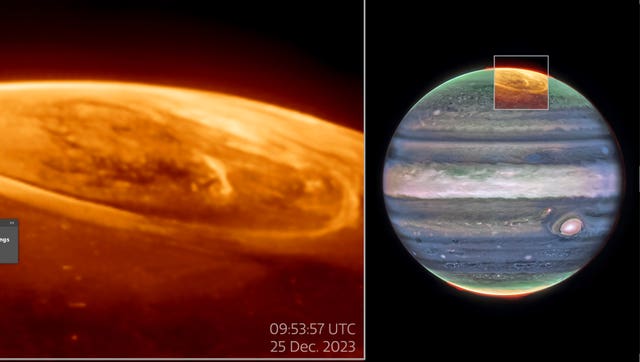Bright auroras on Jupiter captured by Webb Space Telescope
The planet displays dancing lights when high-energy particles from space collide with atoms of gas in the atmosphere near its magnetic poles.

Jupiter’s dazzling auroras are hundreds of times brighter than those seen on Earth, new images from the James Webb Space Telescope reveal.
The solar system’s largest planet displays striking dancing lights when high-energy particles from space collide with atoms of gas in the atmosphere near its magnetic poles, similar to the way the northern lights are triggered on Earth.

But Jupiter’s version has much greater intensity, according to an international team of scientists who analysed the photos from Webb taken at Christmas in 2023.
Webb previously captured Neptune’s glowing auroras in the best detail yet, many decades after they were first faintly detected during a flyby of the Voyager 2 spacecraft.





